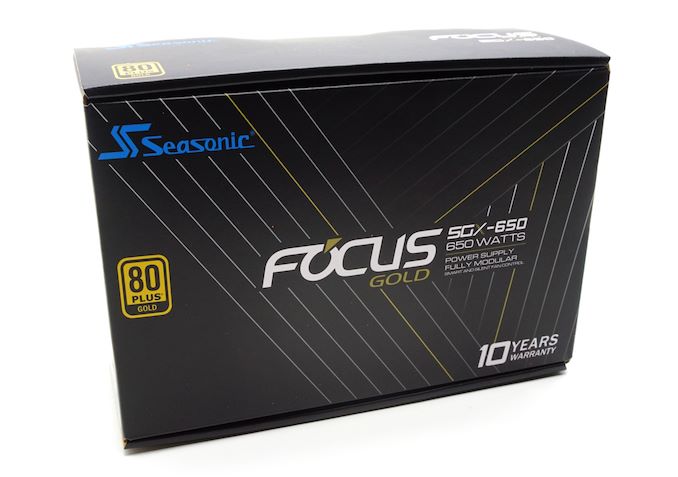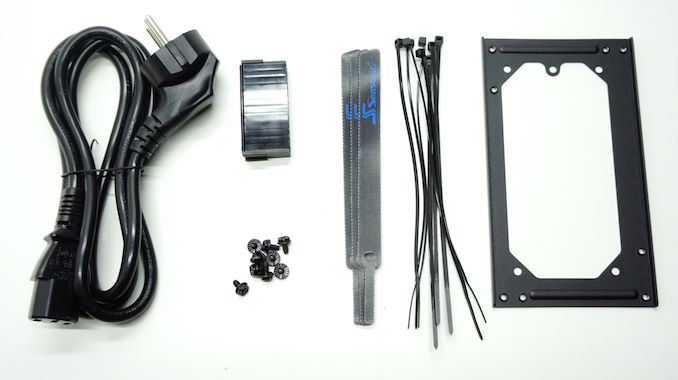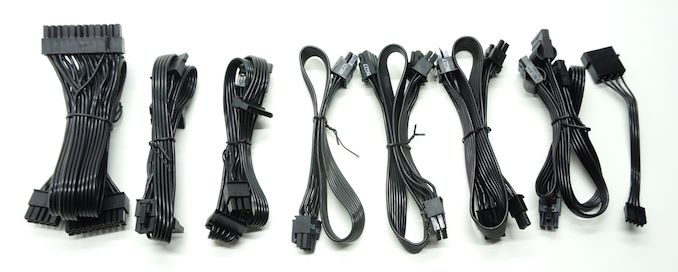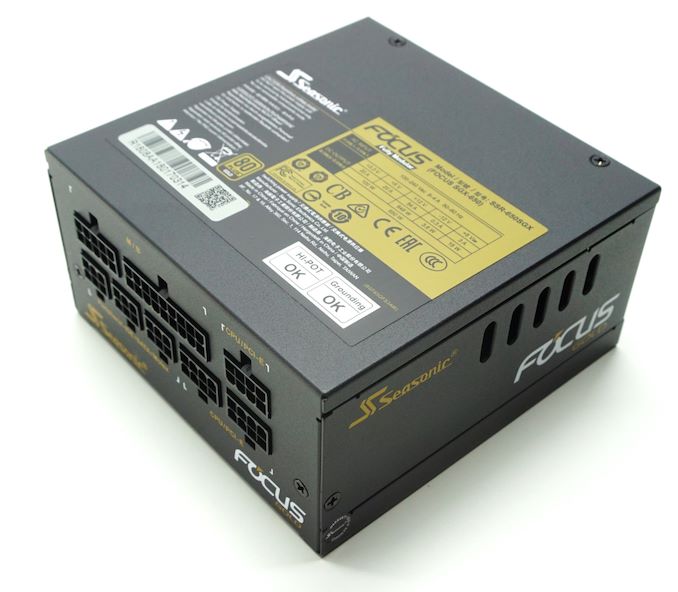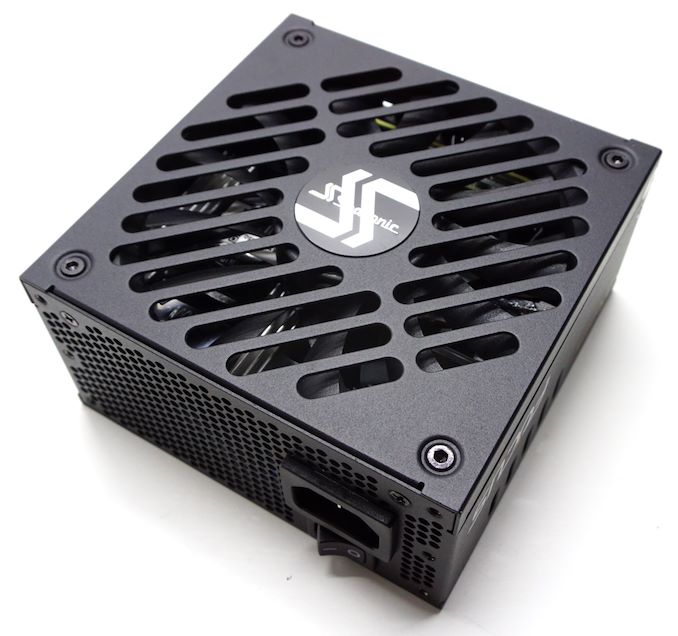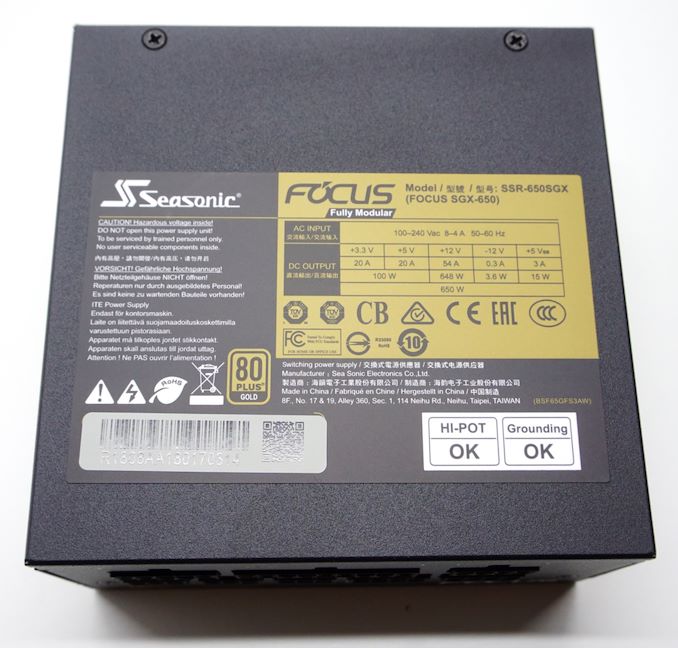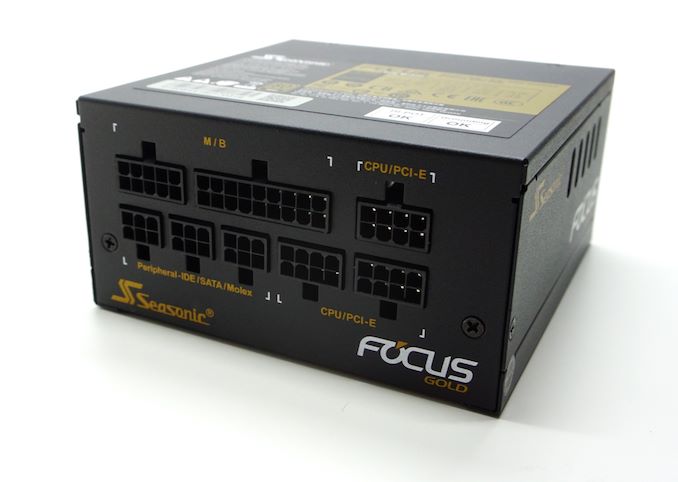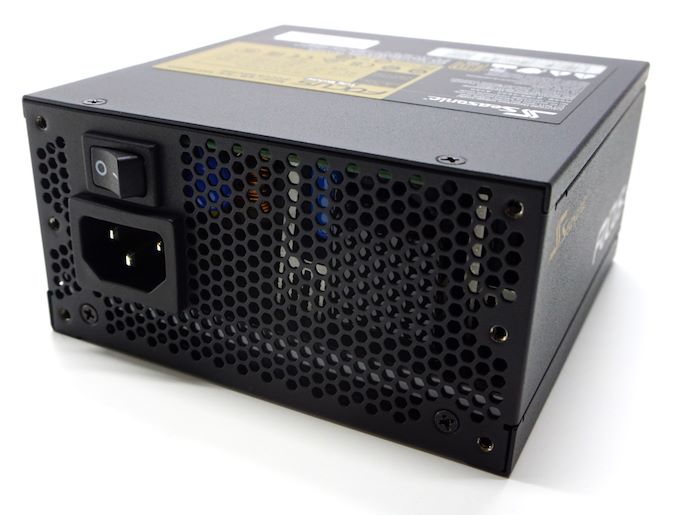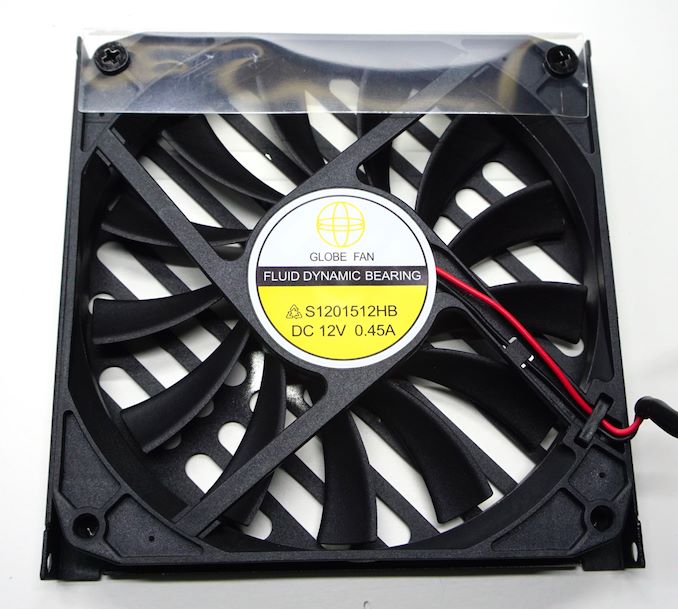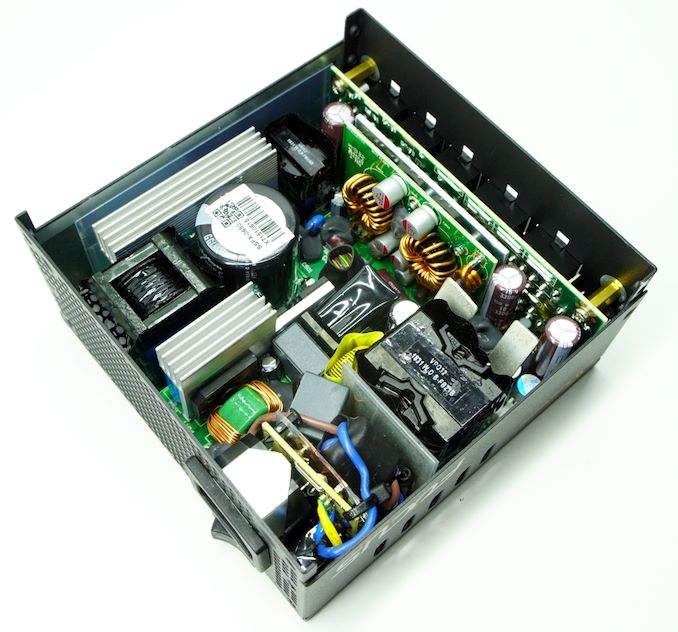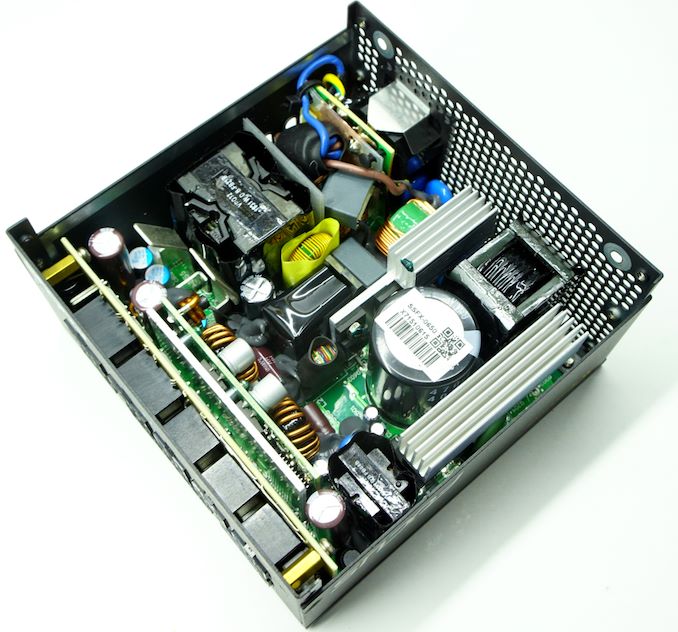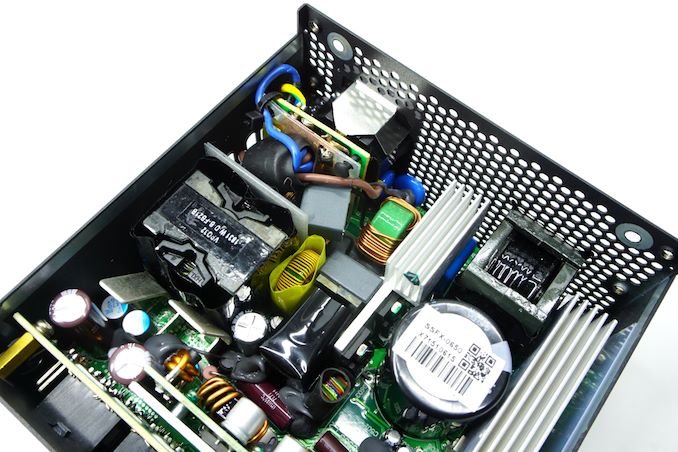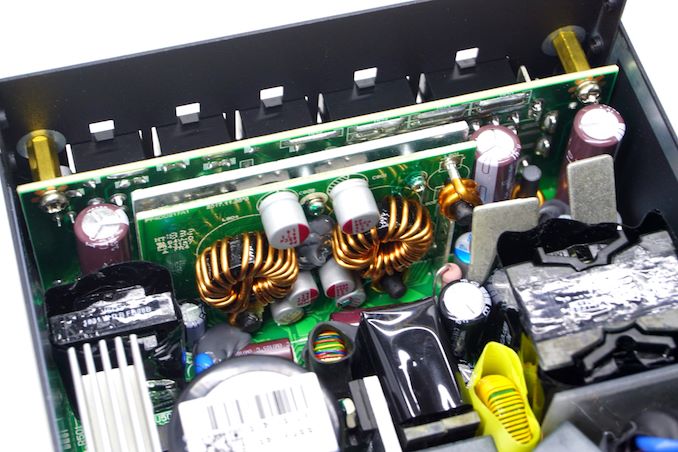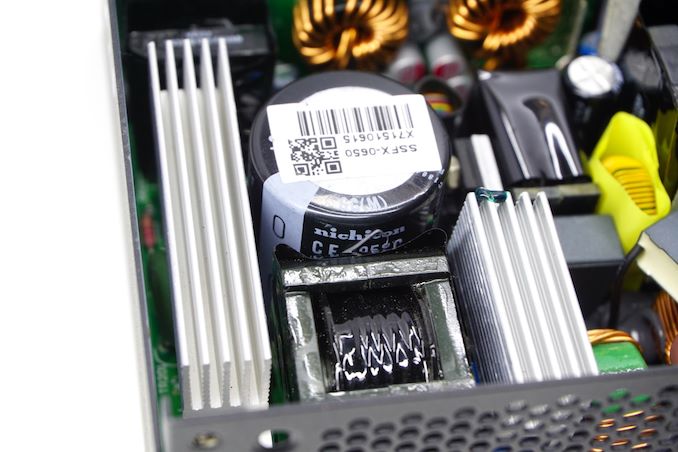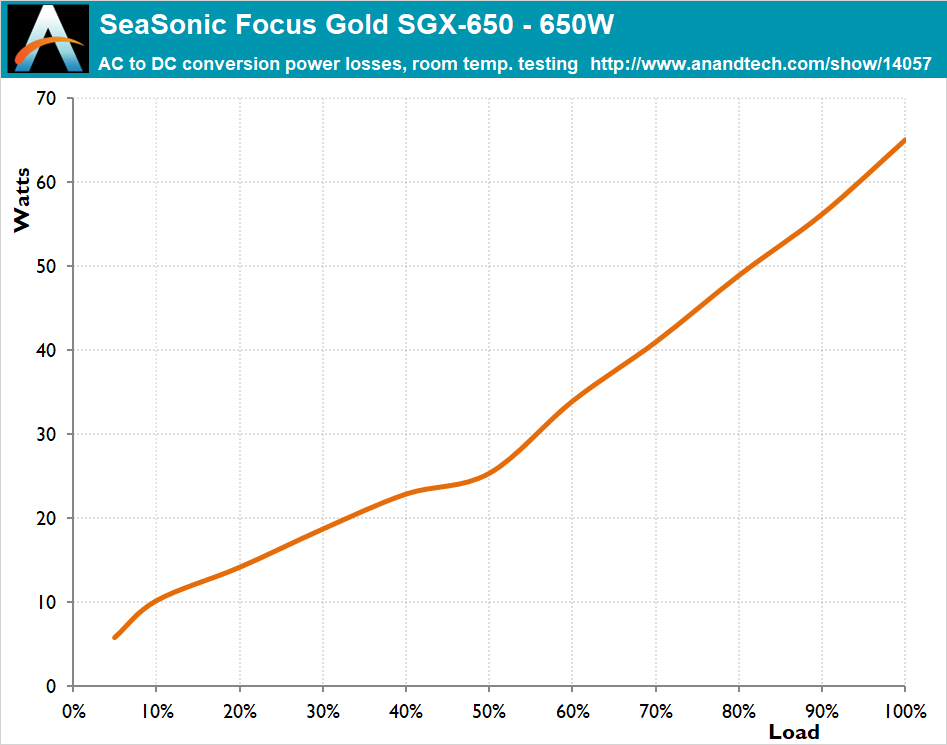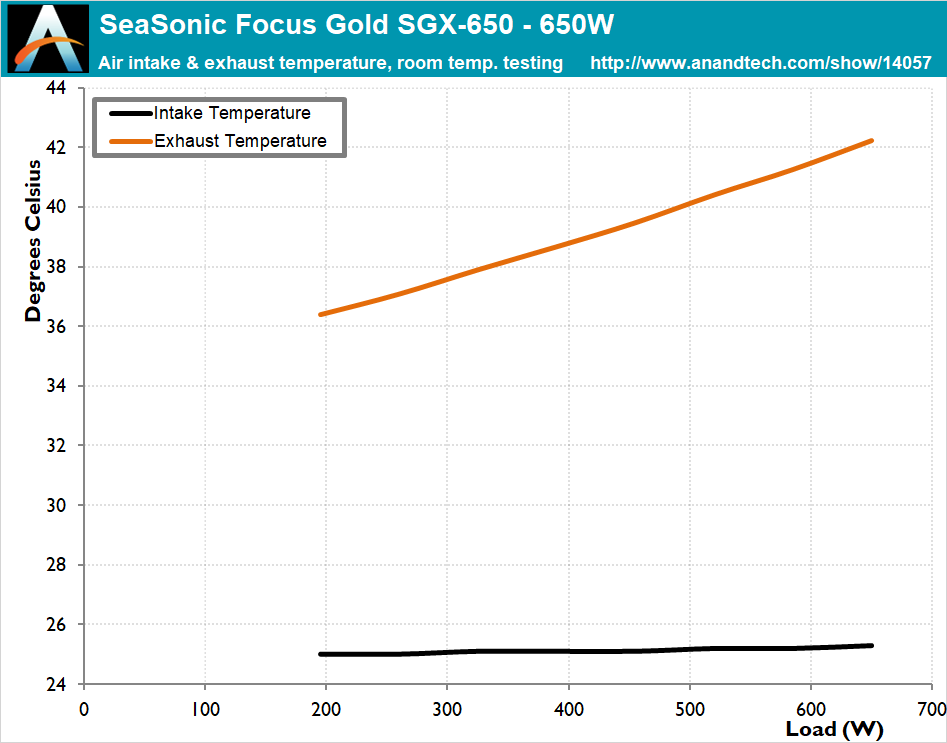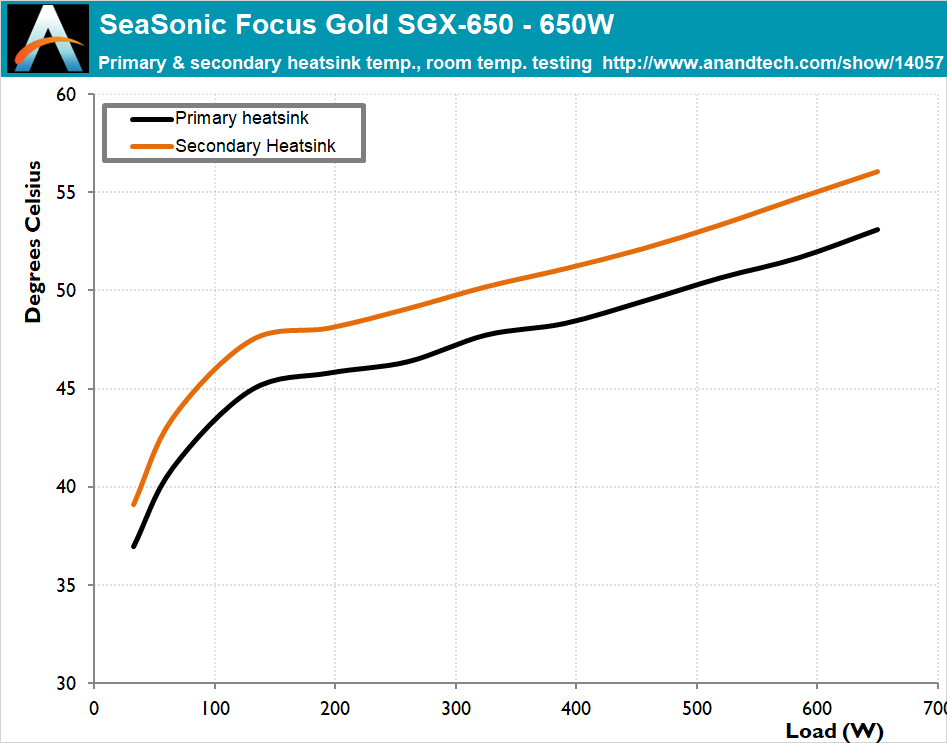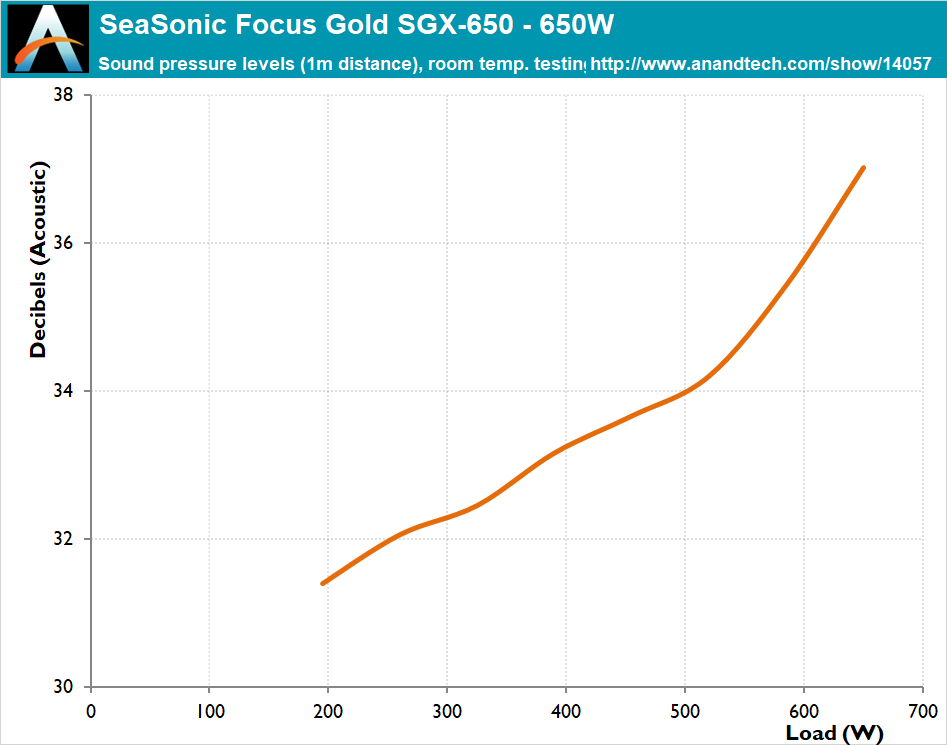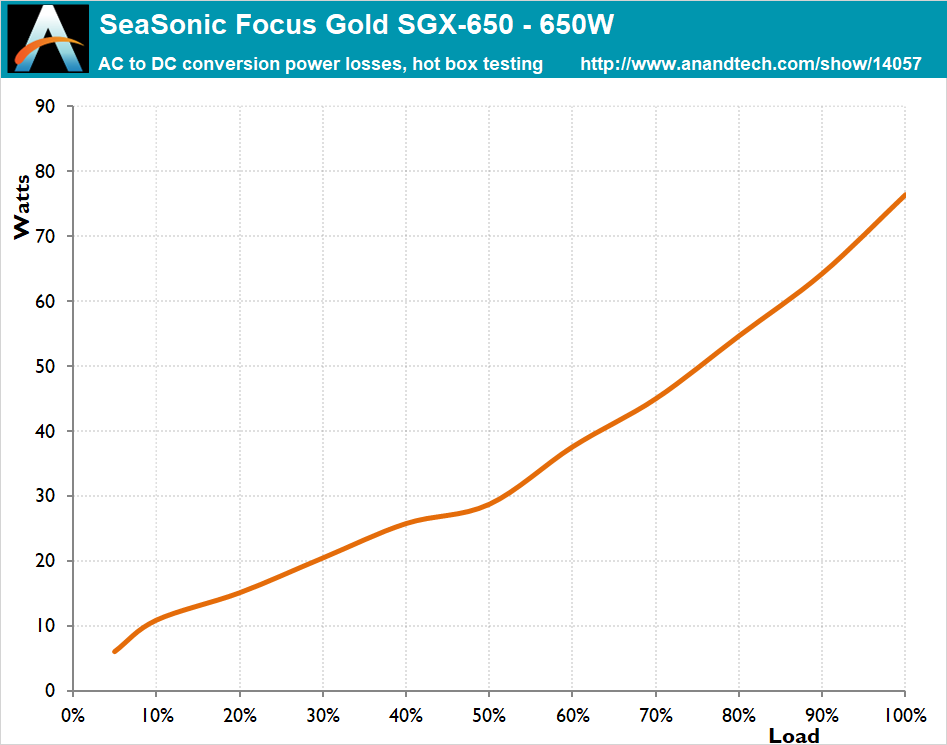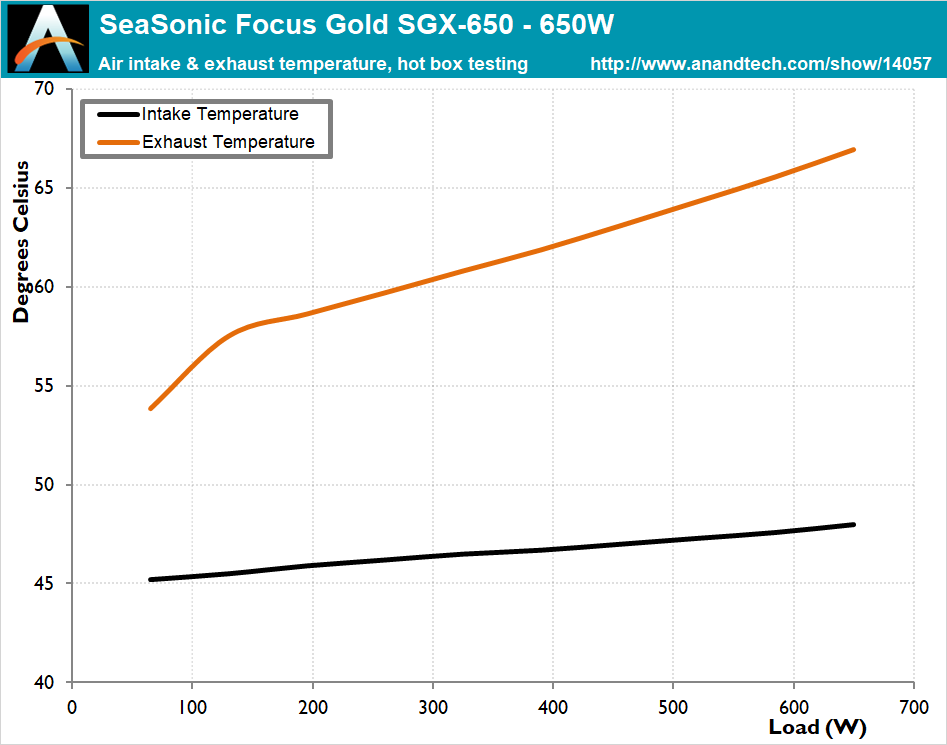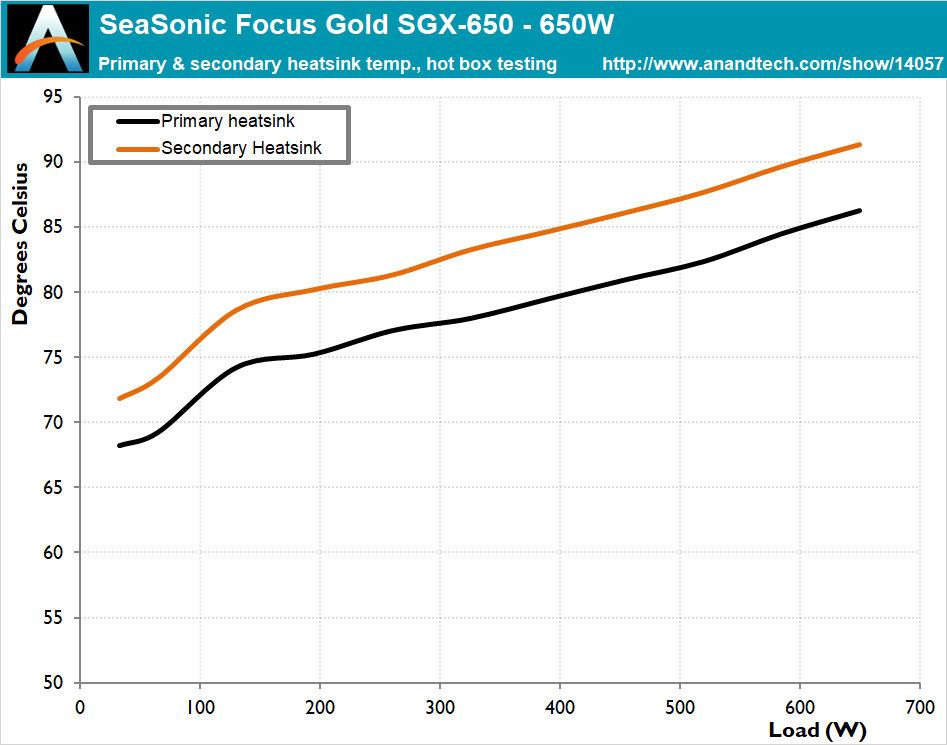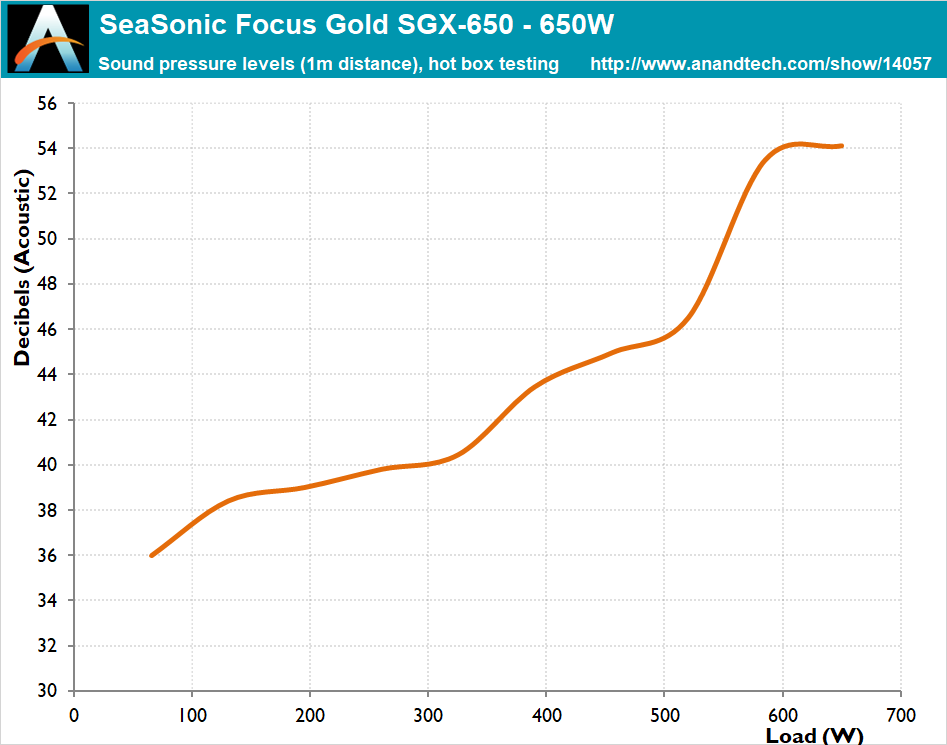
Original Link: https://www.anandtech.com/show/14057/the-seasonic-focus-gold-sgx650-sfx-psu-review
The SeaSonic Focus Gold SGX-650 SFX Power Supply Review: Seasonic Starts off SFX With a Stunner
by E. Fylladitakis on March 7, 2019 8:30 AM EST- Posted in
- Seasonic
- PSUs
- Cases/Cooling/PSUs
- SFX
- Focus Gold SGX

For the past several years, PC components have generally been getting more efficient and compact, allowing builders to create ever smaller and more appealing systems. The demand for compact gaming PCs is particularly high as, despite their higher initial cost, modern systems are more powerful than gaming consoles and have a significant number of other advantages as well.
As a consequence of that demand for compact-yet-powerful PCs, the overall market demand for high-performance SFX PSUs has been increasing as well, as top-tier graphics cards still have substantial power requirements. Although the selection of high-end SFX PSUs is not nearly as rich as that of traditional ATX PSUs, more and more high-end, advanced feature SFX PSUs are being released every year. And this boom hasn't just been the same few companies; even manufacturers who've traditionally focused on just ATX PSUs are now getting into the SFX market as well.
For today's review we're taking a look at SeaSonic’s latest advanced SFX PSU series, the Focus Gold SGX. The series consists of just two units: a 450W model and a 650W model. The former is ideal for systems with mid-range graphics cards (or less), while the latter can offer the higher power output required to handle top-tier cards and more exotic configurations. Along those lines, for our look at the Focus Gold SGX series SeaSonic is putting their best foot forward, having sent us their 650W model. With a $129 price tag, this PSU is still very much a high-end PSU for the SFX market, but is actually rather reasonably priced when compared to the other high-power PSUs it competes with.
| Power Specifications ( Rated @ 40 °C *) | |||||
| AC INPUT | 100 - 240 VAC, 50 - 60 Hz | ||||
| RAIL | +3.3V | +5V | +12V | +5Vsb | -12V |
| MAX OUTPUT | 20A | 20A | 54A | 3A | 0,3A |
| 100W | 648W | 15W | 3,6W | ||
| TOTAL | 650W | ||||
Packaging and Bundle
SeaSonic’s packaging is aesthetically simple, with virtually nothing but text covering the front side of the box. There are some thin lines forming an abstract shape but they seem like a basic attempt to catch a shop-browser’s attention. Despite its very simple appearance, the box is strong and the internal packaging is excellent, ensuring the safety of the lightweight unit during shipping.
Inside the box, we found a rich bundle, especially for an SFX PSU. Aside from the regular AC power cable and the typical mounting screws, the company includes cable ties, three cable straps, and an SFX to ATX adapter. The latter is especially useful for users that upgrade or swap parts often, ensuring that their SFX PSU will be usable even if they decide to forgo their SFX design and build something else. SeaSonic even included a basic PSU jump-start adapter for users to test their PSUs without having to connect a system.
The SeaSonic Focus Gold SGX-650 is a fully modular PSU, so every cable can be detached, including the 24-pin ATX cable. All of the cables are ribbon-like, “flat” type, and relatively short when compared to typical ATX products. The shortened cables are the reasonable choice considering that the PSU is likely to be installed in very compact system where every millimeter counts, but their length is a potential issue for users wanting to use the PSU with a regular ATX case. Every cable is made of black wires and black connectors.
| SeaSonic Focus Gold SGX-650 | ||
| Connector type | Hardwired | Modular |
| ATX 24 Pin | - | 1 |
| EPS 4+4 Pin | - | 1 |
| EPS 8 Pin | - | - |
| PCI-E 6+2 Pin | - | 4 |
| PCI-E 8 Pin | - | - |
| SATA | - | 6 |
| Molex | - | 3 |
| Floppy | - | 1 |
External Appearance
One of the major drawbacks that SFX PSUs have is that 120 mm fans do not fit into the standard 125 × 63.5 × 100 mm / 4.92 × 2.5 × 3.94 in (W×H×D) SFX form factor. Opting to go with a 1200mm anyhow, SeaSonic has lengthened the chassis slightly, so the Focus Gold SGX-650 measures 25 mm longer than a standard SFX PSU. Although that does not sound like a huge difference, it could cause compatibility problems with compact cases that can only fit standard-sized SFX PSU.
SeaSonic sprayed the chassis of the Focus Gold SGX-650 with a matte black paint. The series and company logos are sprayed on every side of the PSU in white and gold colors, except from the top side of the unit where a large sticker with its electrical specifications and certifications lies. The bottom part of the chassis forms a unique finger guard for the slim 120 mm fan hidden beneath it, with the company logo on a metallic badge right above where the fan’s engine is.
Despite the compact dimensions of the unit, the designer managed to place a small on/off switch next to the AC cable receptacle on the rear side of the PSU. The front side is much more interesting, housing the connectors for the modular cables. SeaSonic did not color-code the connectors, but they have a basic legend printed on the chassis that indicates where each connector goes. Besides, it is practically impossible for a user to insert a cable into the wrong connector, as each cable type has a different connector and the connectors are keyed.
Internal Design
SeaSonic entrusted the cooling of their most powerful SFX PSU to Globe, a very popular manufacturer of quality cooling fans. The 120 mm low-profile fan of the SGX-650 has a fluid dynamic bearing (FDB) and is actually rather powerful, with a theoretical maximum speed of 2200 RPM. It should never reach that high a speed under normal operating conditions, but the safety overhead is more than welcome. Note that the fan’s model number also refers to a regular sleeve bearing model but this indeed is an FDB bearing fan, with Globe causing quite the confusion by not changing the model’s code.
We need not check the OEM of this unit as SeaSonic obviously designed it, developed it, and built it themselves. Despite the relatively high power rating and the compact size of the chassis, the interior of the SeaSonic Focus Gold SGX-650 isn't all that densely packed. The filtering stage starts on a secondary PCB that is soldered on the back of the AC receptacle. It is a textbook design with four Y capacitors, two X capacitors, and two filtering inductors in total. The placement of the filtering stage components is a bit too tight, with the designer forced to raise one of the X capacitors, as it obviously would not fit in between of the other components.
There is only one bridge rectifier, which is sharing its heatsink with the primary side inversion MOSFETs. The APFC circuit is also a textbook design, with the active components on the large heatsink across the edge of the PCB, one enclosed filtering coil and a single capacitor. Meanwhile the Nichicon-made capacitor is surprisingly huge for a PSU of this size and power rating, with SeaSonic using a 400V/470μF cap. There are two primary side inversion MOSFETs that form the heart of an LLC resonant half-bridge design.
On the secondary side of the PSU we find a small heatsink with no components visibly attached to it; this is one of SeaSonic’s standard techniques to place the secondary side MOSFETs underneath the main PCB and thermally connect them to the chassis of the PSU, improving their cooling. A vertical PCB holds the DC-to-DC converters for the 5V and 3.3V voltage lines, supported by a modest heatsink. Nippon Chemi-Con supplies all of the electrolytic capacitors of the SeaSonic Focus Gold SGX-650. The polymer capacitors are coming from both Nippon Chemi-Con and Nichicon, making the PSU an all-Japanese affair.
Cold Test Results
For our PSU testing, we are using various high precision electronic loads with a maximum power draw of 2700 Watts, a Rigol DS5042M 40 MHz oscilloscope, an Extech 380803 power analyzer, two high precision UNI-T UT-325 digital thermometers, an Extech HD600 SPL meter, a self-designed hotbox and various other bits and parts. For a thorough explanation of our testing methodology and more details on our equipment, please refer to our How We Test PSUs - 2014 Pipeline post.
The efficiency of the SeaSonic Focus Gold SGX-650 SFX PSU is very good. Although the unit technically fails to meet the 80Plus Gold certification requirement for 90% efficiency at a 20% load when powered from a 230V AC source, it showcased exceptional efficiency across the entire load range. Conversely however, the efficiency drop when the unit is powered from a 115V AC source is very small, from practically zero at low loads up to a maximum of about 0.75%. This allows the unit to easily surpass the 80Plus Gold requirements for an input voltage of 115V AC.
SeaSonic designed the thermal control of the Focus Gold SGX-650 to utilize a semi-fanless mode, meaning that the fan will start only after the load is greater than about 180 Watts or when it is absolutely necessary. As expected, the internal temperatures of the PSU rise sharply under low loads due to the lack of active cooling, but they quickly stabilize once the fan starts. Considering the size and compactness of the design, the internal temperatures of the Focus Gold SGX-650 are quite low.
Despite the use of a low-profile 120 mm fan, it seems that the cooling requirements of the Focus Gold SGX-650 are low. Even when the fan does start, it barely reaches audible levels even when the PSU is heavily loaded. Assuming that it takes a rather powerful system to heavily load a 650 Watt PSU, it is very likely that any sound coming from the PSU will be masked by the noise of other components.
Hot Test Results
Even though they complied with the design power quality guidelines, earlier SFX PSU designs often displayed poor power quality figures. However, more recent models, like the powerful SilverStone SX700-LPT and Corsair’s SF450, were greatly improved. The SeaSonic Focus Gold SGX-650 also delivers excellent power quality figures, comparable to those of the better ATX PSUs available.
Overall, filtering is very good on all lines. Our instruments recorded a maximum voltage ripple on the 12V line of only 26 mV under maximum load, with equally low voltage ripple figures on the secondary 3.3V and 5V lines. Voltage regulation is equally impressive, with the 12V maintaining a regulation of 1.0% within the nominal load range and even tighter regulation on the secondary lines.
| Main Output | ||||||||
| Load (Watts) | 131,66 W | 328,95 W | 489,82 W | 651,52 W | ||||
| Load (Percent) | 20,26% | 50,61% | 75,36% | 100,23% | ||||
| Amperes | Volts | Amperes | Volts | Amperes | Volts | Amperes | Volts | |
| 3.3 V | 1,78 | 3,38 | 4,45 | 3,38 | 6,67 | 3,35 | 8,89 | 3,34 |
| 5 V | 1,78 | 5,06 | 4,45 | 5,04 | 6,67 | 5,03 | 8,89 | 5,02 |
| 12 V | 9,6 | 12,15 | 24,01 | 12,14 | 36,01 | 12,05 | 48,02 | 12,02 |
| Line | Regulation (20% to 100% load) |
Voltage Ripple (mV) | |||||
| 20% Load | 50% Load | 75% Load | 100% Load | CL1 12V |
CL2 3.3V + 5V |
||
| 3.3V | 0,9% | 8 | 8 | 12 | 12 | 8 | 16 |
| 5V | 0,8% | 10 | 12 | 16 | 18 | 8 | 20 |
| 12V | 1,1% | 12 | 16 | 20 | 26 | 30 | 26 |
Looking at our hotbox test results, although the energy conversion efficiency of the SeaSonic Focus Gold SGX-650 does not drop significantly at first when it's inside the hotbox, there is a significant degradation once the load passes 550 Watts. This suggests that the PSU is finally getting thermally stressed at this point. The average efficiency reduction is 1.1%, with a drop of over 2.5% at 100% load, indicating significant thermal stress.
Meanwhile when it comes to cooling, when placed in our hotbox the fan in the SeaSonic Focus Gold SGX-650 started almost immediately after the PSU was powered-on. Noise levels were initially low but the dB(A) figures start climbing quickly when the load passed 300 Watts, with the PSU relying on the thin 120 mm fan for reliable operation. The fan reached its maximum speed with a 585 Watt load, struggling to maintain operational temperatures inside the PSU. Overall the fan does manage to keep the SeaSonic Focus Gold SGX-650 operational under these harsh operating conditions, if only barely.
Final Words
The new Focus Gold SGX series marks SeaSonic’s effort to enter the premium SFX PSU market with their own product. SeaSonic’s approach here is refreshingly modest, with the company opting not to build a halo product with a price tag that would instantly drive almost everyone away, but rather to design and develop a very reliable and high-performing PSU with a reasonable $129 price tag.
The high quality of the Focus Gold SGX-650 probably is its biggest selling point. It is an exceptionally well-designed and constructed PSU, with components coming from the best manufacturers and a fantastic assembly job. So it is not surprising that SeaSonic backs their power supply with a 10 year warranty.
Under normal operating conditions we recorded excellent performance figures on all fronts – electrical, thermal, and acoustic. SeaSonic is known for their emphasis on power quality and their new SFX unit is no exception, with exceptional power quality and power stability figures. The operating temperature of the Focus Gold SGX-650 is relatively low and the 120 mm fan is not to blame for that, as it barely is necessary when the unit operates in room temperature and under typical loads.
The Focus Gold SGX-650 also delivers very good performance while operating under high ambient temperatures, but there is a catch – it really doesn't want to be heavily loaded. After all, SeaSonic does de-rate the unit down to 80% capacity when the ambient temperature exceeds 40°C, and in our testing this seems like a prudent move. The overall performance of the power supply drops significantly when it's pushing over 550 Watts while operating under high temperatures, suggesting that these actually are overload conditions for the unit. In fact I'd probably go one step further and suggest that the PSU shouldn't be used with a load over 500 W if it really is going to be used under harsh ambient conditions.
Overall, high performance SFX PSUs are slowly but surely gaining ground on the PC market. And while the current selection of SFX products is rather limited, SeaSonic has certainly created a very interesting competitor with the Focus Gold SGX-650. Thanks to the high quality design of the power supply, it's currently one of the best-performing SFX PSUs available; and that's even if we take into account its disdain for hot environments.

